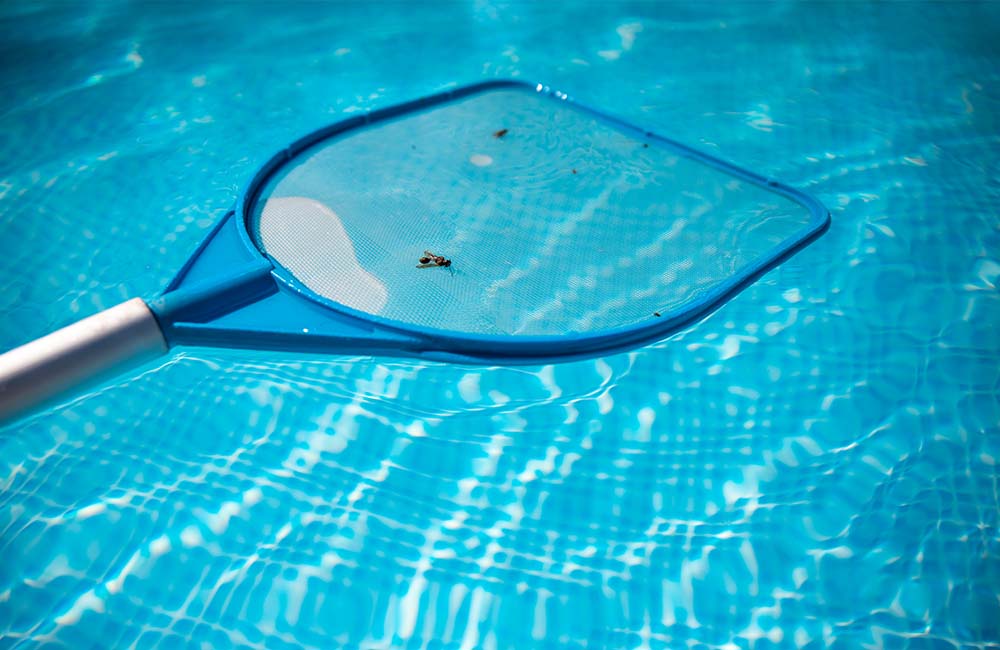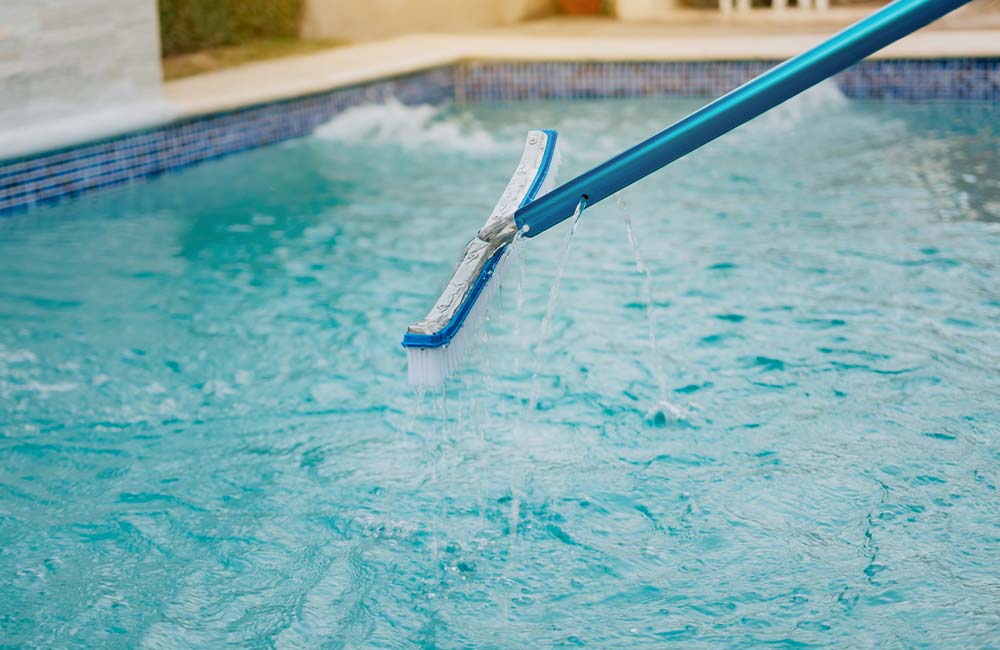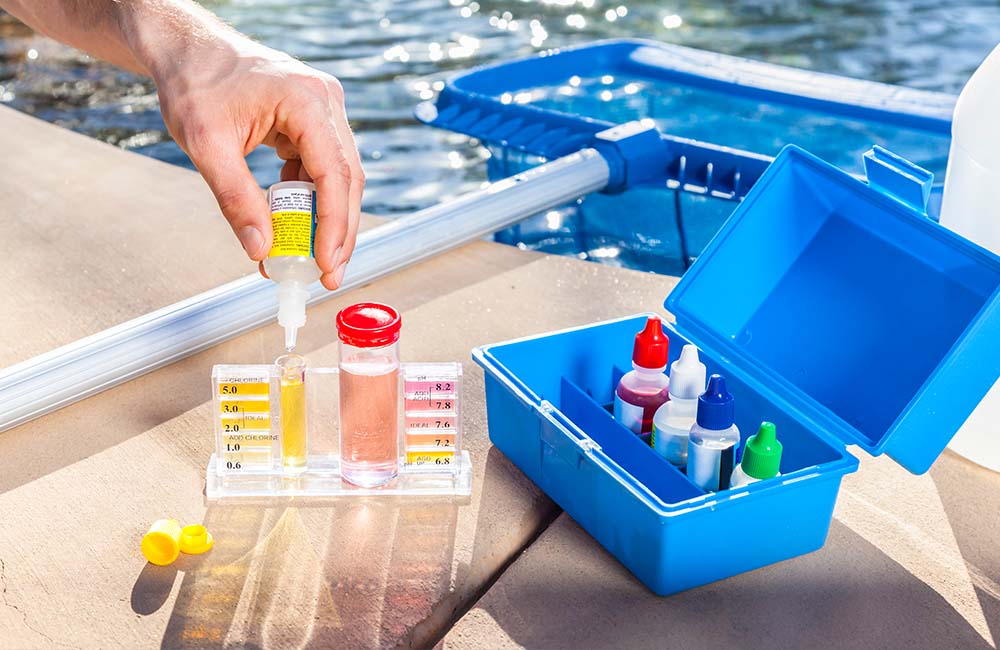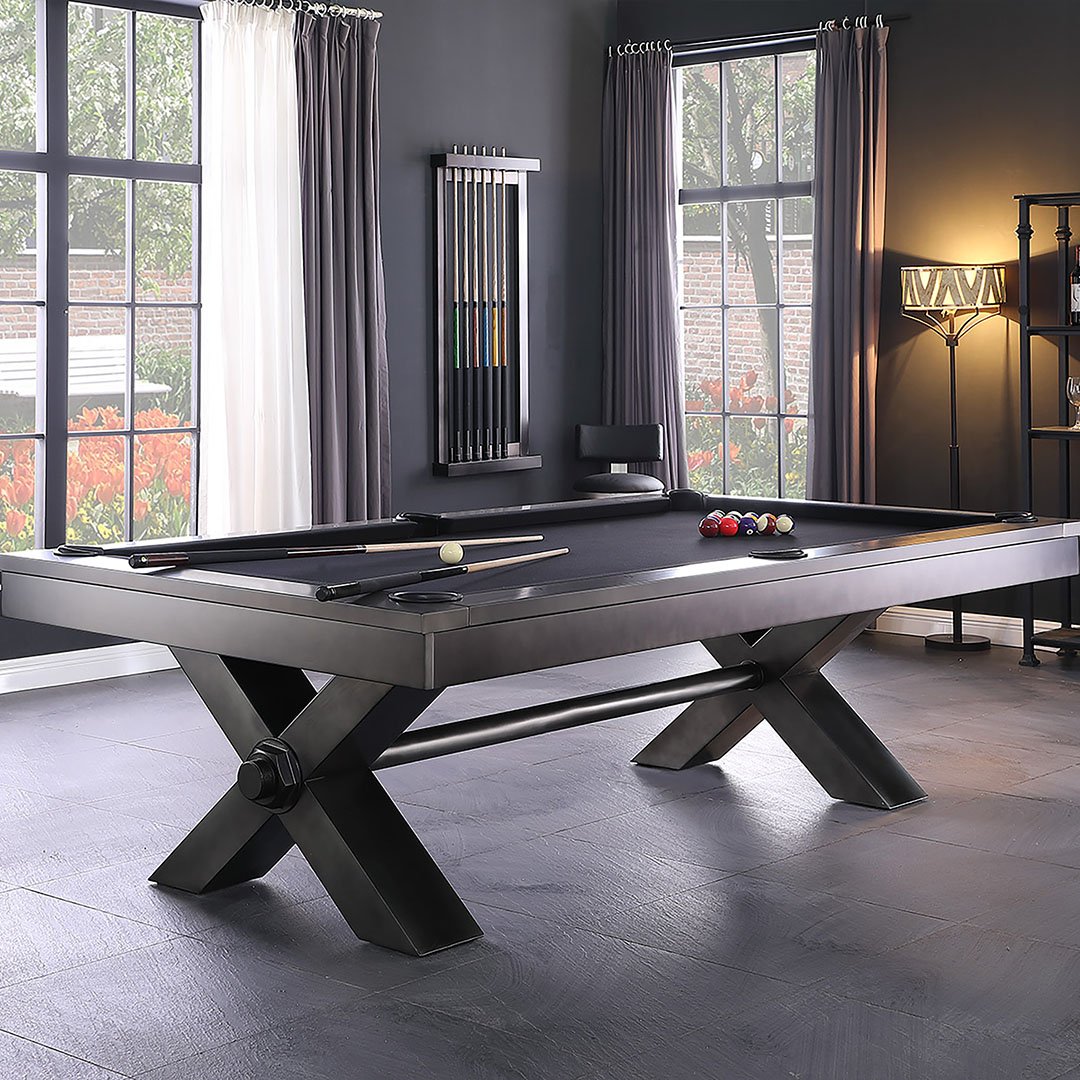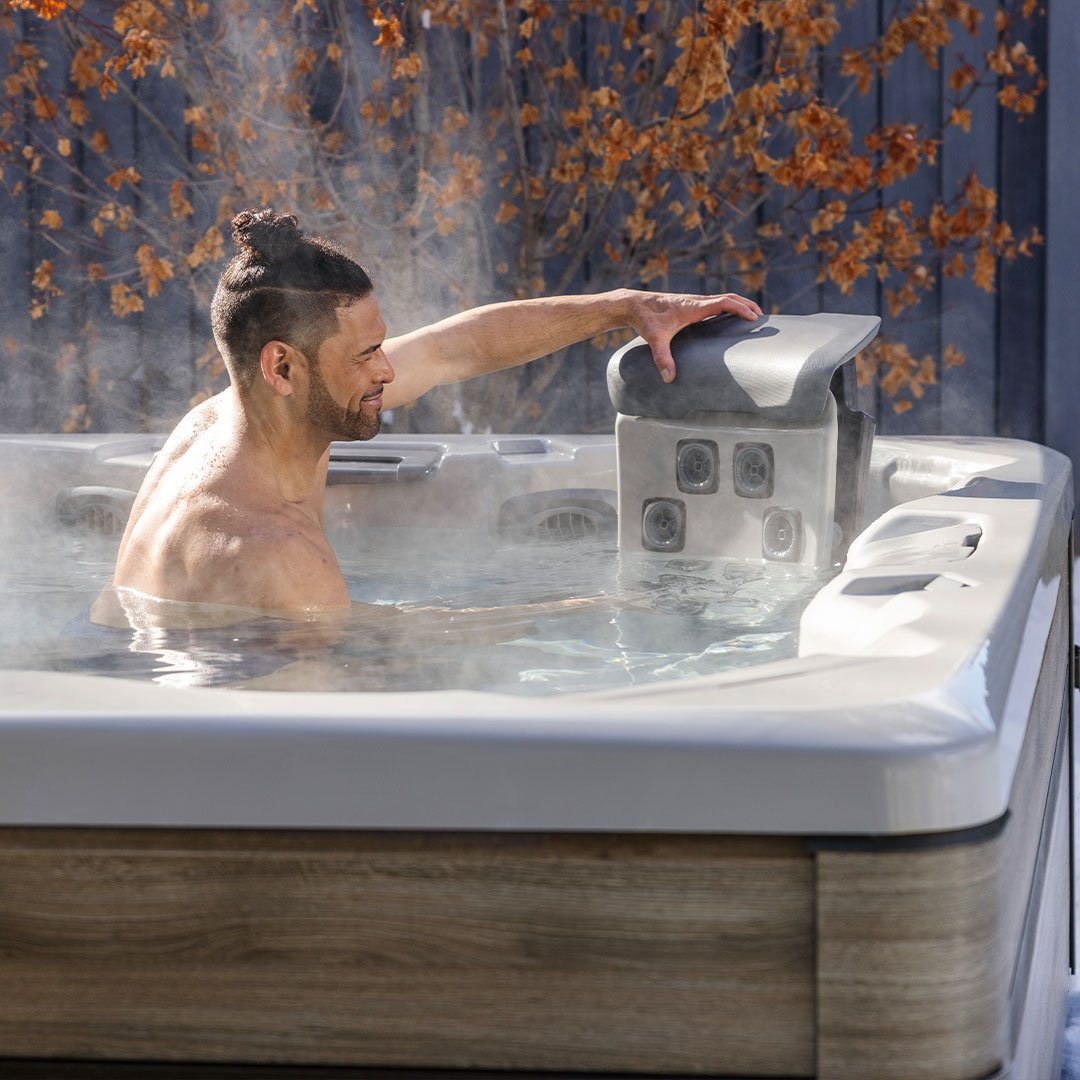How to Clean Your Above Ground Pool: A Step-by-Step Guide
Is your above-ground pool looking less than inviting? With the right tools and a bit of know-how, you can transform your pool from a murky mess to a sparkling oasis. Regular cleaning not only keeps your pool visually appealing but also ensures it's safe and healthy for everyone to enjoy. Let's dive into a comprehensive guide on how to clean an above-ground pool, ensuring those life's best moments start right here, in your backyard.
Why Regular Cleaning is Essential for Your Above Ground Pool
.jpg?width=1000&height=650&name=Blog%20Images%20(3).jpg)
A good pool cleaning schedule ensures that your swimming pool stays clean and healthy all year long. You can create a simple pool cleaning schedule to help stay on top of tasks by following these guidelines:
Pool Usage
Ensuring a safe and inviting pool involves more than just aesthetics. A clean pool prevents:
- Water Illnesses: Imbalanced chlorine and pH levels can harbor recreational water illnesses.
- Algae Growth: Neglecting your pool can lead to algae, turning the water an unappealing green.
- Slippery Surfaces: Algae and debris create hazardous conditions.
- Equipment Damage: A dirty pool can clog and damage the filtration system.
- Aesthetic Damage: Debris and chemical imbalances can stain and damage the pool liner.
Understanding the significance of maintaining a clean pool underlines our commitment to creating spaces where families and friends can gather safely and joyfully.
Preparing to Clean Your Above Ground Pool
-
Before we start, ensure you have the necessary tools and chemicals. You'll need:
- A telescoping pole
- A pool brush
- A flat skimmer
- A pool vacuum (or automatic pool cleaner for convenience)
- Chlorine shock and tablets
- Cyanuric acid
- pH increasers and reducers
- Water test strips
With these tools at the ready, you're equipped to tackle pool cleaning like a pro.
Your Step-by-Step Guide to a Sparkling Pool
1. Test and Balance Your Water
Maintaining the right chemical balance in your pool is essential for clean and safe water. Use water test kits to check levels of chlorine, pH, alkalinity, and calcium hardness at least twice a week. Adjust as necessary to maintain ideal levels:
- pH should be between 7.2 and 7.6
- Chlorine levels should be between 1 and 3 ppm
- Total alkalinity should fall within 80 to 120 ppm
- Calcium hardness should be between 200 and 400 ppm
Balanced water prevents corrosion, scaling, and discomfort for swimmers, ensuring your pool remains a welcoming oasis.
By following these detailed steps, you ensure your pool not only looks inviting but also provides a clean, safe environment for everyone to enjoy. Regular maintenance is key to extending the lifespan of your pool and making home entertainment a delightful experience.
2. Run Your Pump and Backwash Your Filter

A pristine pool starts with a functioning filtration system. Your pump circulates water, ensuring every drop passes through the filter, trapping dirt, debris, and algae. For optimal cleanliness, run your pump for at least 8 hours a day. This guarantees that the water is fully cycled through the filter system, maintaining clarity and hygiene.
Backwashing is like giving your filter a deep clean. When the pressure gauge reads 8-10 PSI over its clean, starting pressure, it's time to backwash. This process reverses water flow, flushing out trapped dirt and debris from the filter. Sand and diatomaceous earth (DE) filters require regular backwashing. Cartridge filters, on the other hand, should be removed, rinsed, and replaced. Remember, a clean filter is key to a clean pool.
3. Clean the Filter Basket

The pump basket plays a vital role in catching large pieces of debris before they reach the filter. Regular inspection and cleaning of the filter basket are essential to prevent blockages that can reduce the efficiency of your pump or even cause damage. Simply remove the basket, discard the debris, and rinse with a hose. This simple step can significantly extend the life of your pool's filtration system.
4. Skim the Surface of the Pool
Floating debris, if left unattended, can sink and become harder to remove or clog your filtration system. Using a flat skimmer attached to a telescoping pole, you can easily collect leaves, bugs, and other floating debris. For those times when nature dumps a load of leaves into your pool, a leaf bag attachment becomes invaluable, allowing you to collect and remove heavy debris without clogging your skimmer.
5. Brush the Pool Surface
Algae and small particles can cling to your pool's walls and floor, particularly in areas with poor circulation. By attaching a brush to your telescoping pole, you can scrub these surfaces, dislodging algae and debris. This not only prevents algae growth but also keeps your pool's surfaces smooth and clean. Pay special attention to corners, steps, and under the ladder where debris tends to accumulate.
6. Vacuum the Bottom
Vacuuming is crucial for removing debris that settles on the bottom of your pool. Attach a vacuum head to your telescoping pole and connect the vacuum hose to the skimmer to begin. Move the vacuum slowly across the bottom of the pool to ensure you pick up as much debris as possible. For those seeking convenience, an automatic pool vacuum can be a game-changer, handling the cleaning process with minimal effort from you.
For those seeking convenience and efficiency in pool cleaning, an automatic pool cleaner can be a significant upgrade from manual vacuuming. Choosing the right model for your pool's specific needs is crucial for optimal performance and cleanliness. For a comprehensive understanding of your options and expert advice on selecting the best automatic pool cleaner for your above ground pool, visit our detailed automatic pool cleaner buying guide.
Above Ground Pool Best Practices
Maintaining your above ground pool requires a little know-how and elbow grease, but it's easily manageable with the right equipment. All you have to do is use quality tools and proper techniques for the best results in maintaining your new above ground pool.
Choosing the Right Pool Vacuum
Manual vacuums are affordable but require effort to use. Auto-vacuums that run off the pool's filtration system are more convenient. You can even use robotic models that clean your pool unattended. When choosing your pool vacuum, consider pool size, ease of use, power source, and debris capacity.
Importance of Pool Nets and Cleaners
Use a skimmer net daily to remove floating leaves and bugs before they sink or clog filters. Choose a sturdy net with a frame that won't collapse or bend with heavy debris loads. Brush the entire pool 2-3 times per week to prevent algae and lift debris from crevices. Use soft nylon brushes to avoid damaging pool liners.
Understanding the Role of Pool Filters
Maintain the filter regularly by rinsing cartridges, backwashing sand media, or cleaning D.E. grids if applicable. Replace cartridges every 3 months or when torn. Sand filters may need media changed every 3-5 years. Set the pump to run 8-12 hours daily and monitor the pressure gauge for signs of clogging. Proper filtration is key for clean water.
In addition:
- Test water chemistry 2-3 times weekly and add chemicals like chlorine as needed
- Shock treat monthly and after heavy rains
- Check equipment routinely for leaks or malfunctions
- Treat algae growth immediately if spotted
Investing in quality tools and following best practices prevents problems and keeps water inviting all season.
Implementing Regular Water Treatment Practices
Proper water chemistry is crucial for a clean, safe pool. Follow these chemical treatment best practices:
Balancing Chemical Levels
Test pH, chlorine, alkalinity, and calcium hardness 2-3 times per week with test strips or a liquid test kit. pH should measure 7.4-7.6. Free chlorine level should be 1-3 ppm. Total alkalinity 80-120 ppm. Calcium hardness 200-400 ppm. Add pH decreaser, chlorine shock, sodium bicarbonate, and calcium chloride as needed to maintain levels. Stir and allow time to circulate after adding any chemicals.
Click here to read our guide on pool PH levels.
Shocking Your Pool
Shock treat by adding extra chlorine weekly to destroy contaminants and refresh the sanitizer level. Use granular chlorine or potassium monopersulfate. Shock after heavy rain, when chlorine is low, and if water appears dull. Shocking also controls algae growth. Try to add shock treatment in the evenings, allowing chlorine to dissipate overnight.
Prevention of Algae Growth
Algae prevention starts with balanced chemicals. Regularly test, adjust, and shock the water. Vigorously brush all pool surfaces weekly to prevent algae from taking hold. If needed, add a specialty algaecide according to package directions to kill and prevent algae from coming back.
The Role of Pool Covers in Maintaining Cleanliness
For extra protection during the off-season or when the pool is not in daily use, a pool cover is a valuable tool. A pool cover, also known as a solar blanket, can help maintain heat, limit evaporation, and keep out dirt and debris. It provides an added layer of safety by preventing accidental falls.
Choosing the Right Pool Cover
When selecting a pool cover, consider factors such as the shape and size of the pool, the local climate, and the top rail size. Additionally, assess whether a solid or mesh cover would be more appropriate for your needs. Your local Watson's store can assist you in making the right choice, taking into account the specific characteristics of your above ground pool.
How to Properly Use and Maintain Pool Covers
To extend the lifespan of your pool cover, clean it regularly using a soft brush or broom to remove leaves and other debris. Make sure that the pool cover fits correctly over the top rail to prevent slipping.
Regularly monitor the pressure gauge to ensure the pool cover pump is working efficiently. If the cover gets seriously damaged, it's best to replace it than attempt to repair it. Remember, consistent maintenance is the key to a sparkling clean ground pool.
High-Quality Above Ground Pools
If you’re interested in finding high-quality above ground pools, Watson’s has everything you need.
With Watson’s unmatched selection and knowledgeable service, you’re sure to find the ideal above-ground pool for summers of family fun. Our staff can offer personalized guidance based on decades of experience helping homeowners. Come visit your local Watson’s store today to get started designing your backyard oasis and making memories.
FAQs
How often should you vacuum an above ground pool?
Aim to vacuum an above ground pool at least once per week. For heavy-use pools, vacuum 2-3 times weekly for best results.
What chemicals do you need for above ground pool maintenance?
Chlorine, muriatic acid or sodium bisulfate, pH increaser, alkalinity increaser, calcium hardness increaser, and liquid or granular shocking chemicals.
How do you get an above ground pool crystal clear?
Test and adjust chemicals frequently, vacuum and brush thoroughly each week, run filters properly, and shock treat water periodically to get it crystal clear.
How do you winterize an above-ground pool in Ohio/Michigan weather?
Install winter cover and accessories, use antifreeze, add winter chemicals, disconnect hoses, and rails, cover pumps, and drain to the proper level based on location. Inspect equipment and perform maintenance before closing down your pool for the winter months.





